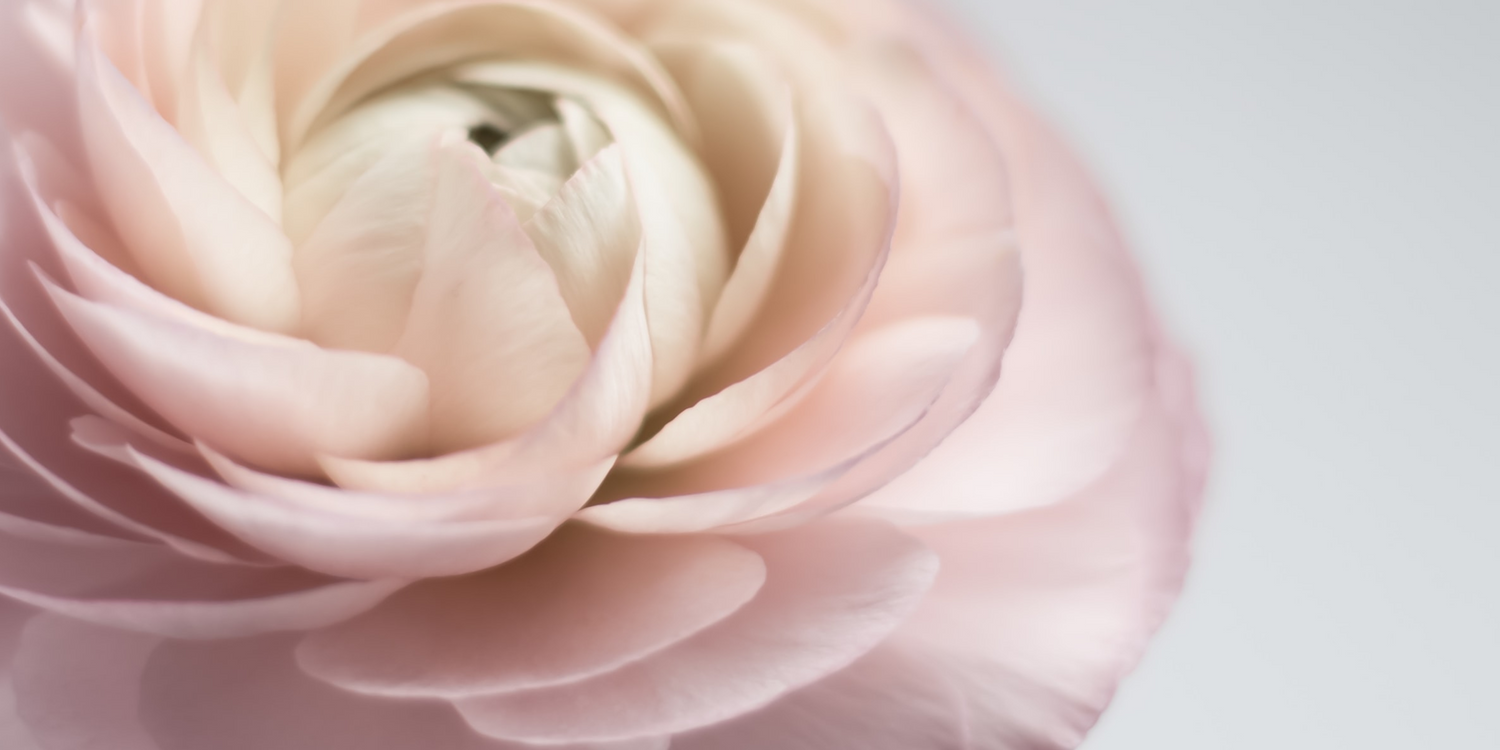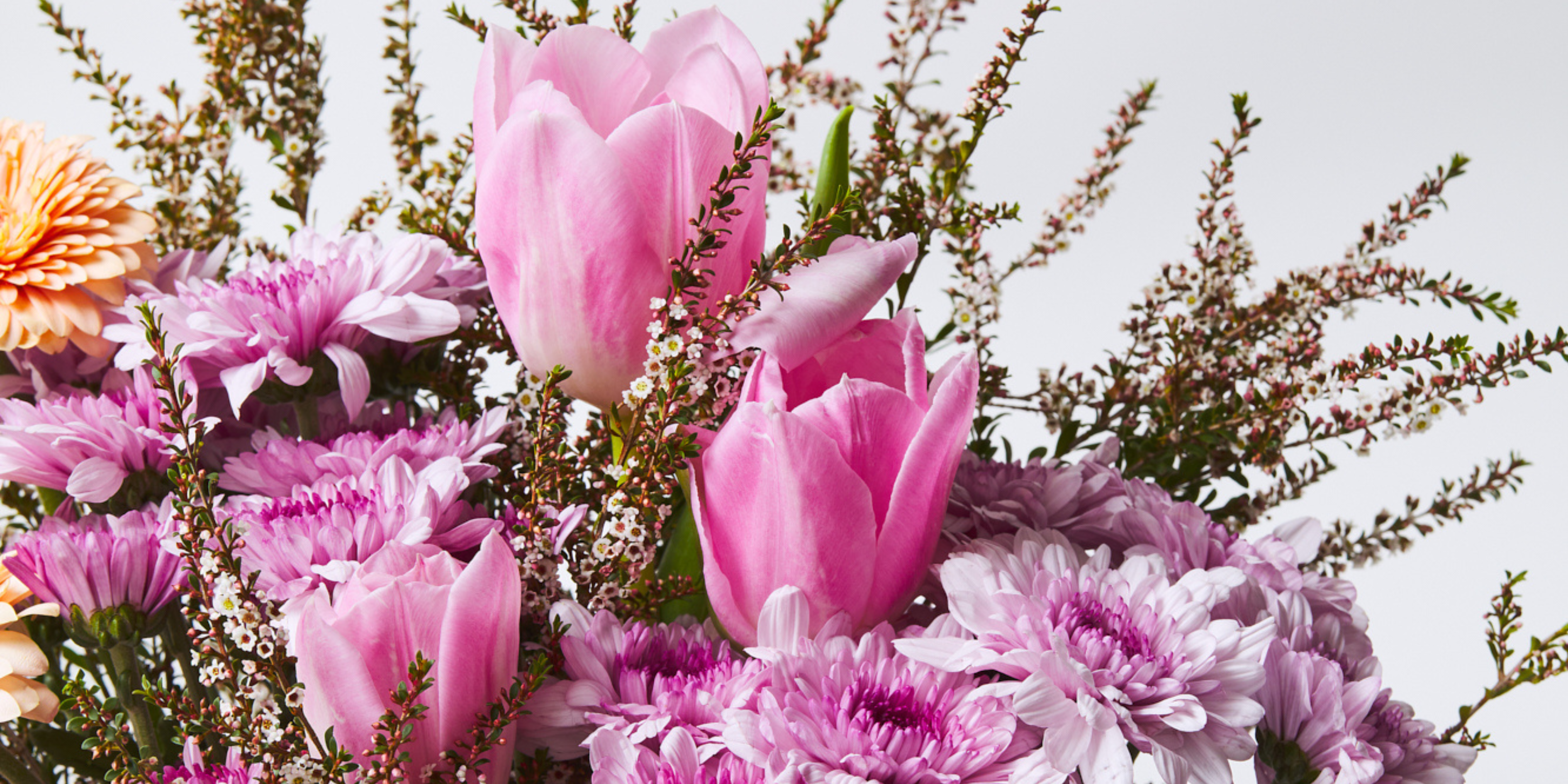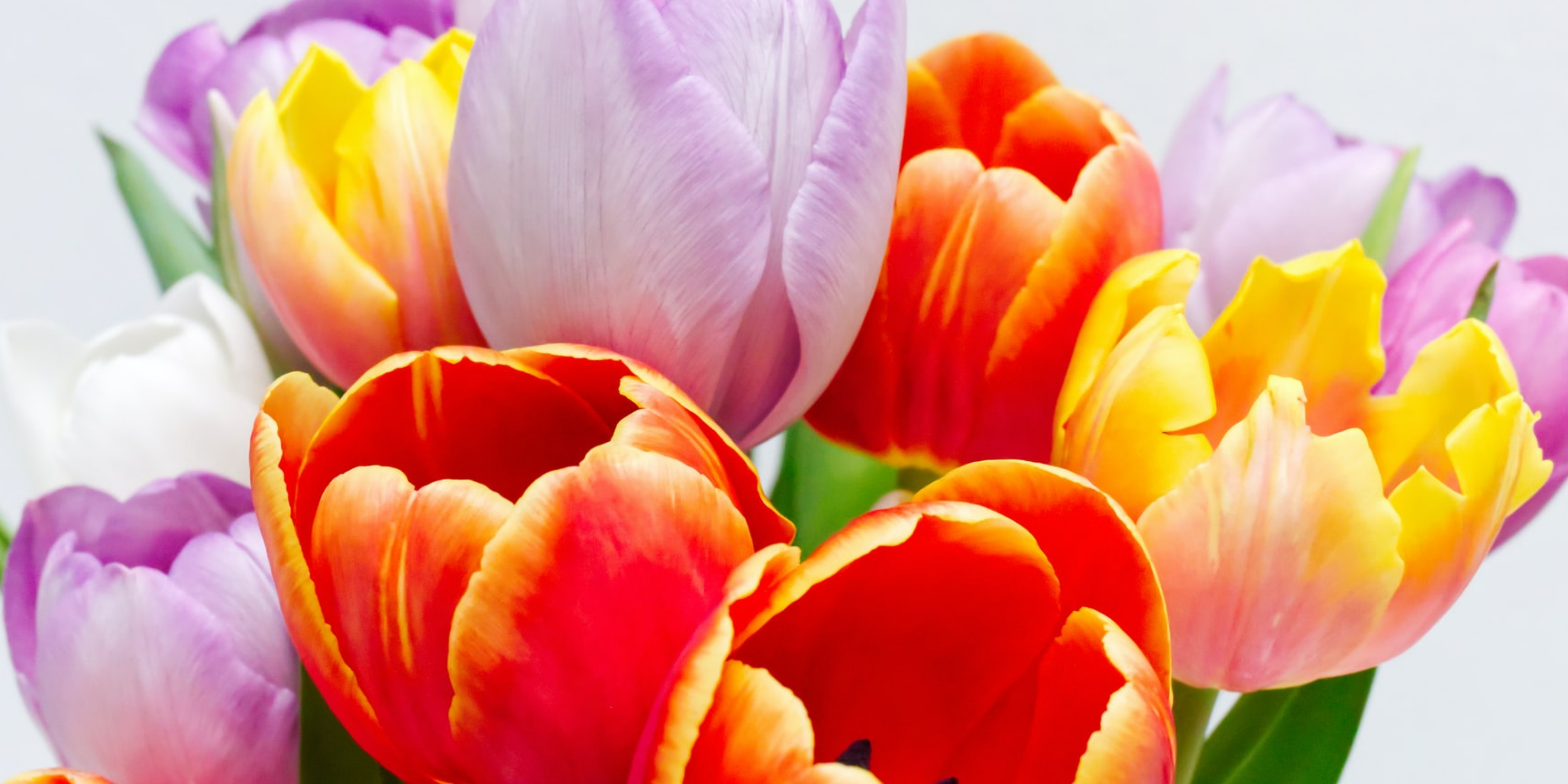Peonies are one of our absolute favourite flowers. These limited-edition blooms only grace us with their presence between late October and early December each year, a timeframe so short it’s almost cruel.
This short flowering season is part of what drives peonies’ popularity. Like anything else that only has a limited run, we loyal peony enthusiasts want to make sure we get our hands on them before they sell out.
A year is 12 months long, and sadly peonies only bloom for a very small portion of that time. So, what do we do during all those peony-less months? We don’t get sad and give up. No! We find alternatives to peonies to tide us over until our faves come back around.
And wouldn’t you know it? We just so happen to have a list of flowers that look like peonies but aren’t peonies to help you. And who knows? You may very well find a new favourite bloom among this list!
Double Tulips

Regular tulips are stunning, for sure, but have you ever seen double tulips? These are essentially just tulips with extra petals, but those extra petals significantly change the shape and appearance of this elegant bloom, giving them a very peony-like look.
Like regular tulips, double tulips bloom predominantly in springtime and come in an array of brilliant hues, from fiery orange to luscious pink to royal purple. When those delicate, ruffled petals unfurl to reveal layer upon layer of stunning colour, you’ll be saying, “Peony, who?”
Dahlias

We simply adore dahlias. When peony season is over, dahlias are a great next-best option, as they bloom from summer to late autumn. Just like peonies, dahlias come in all colours except blue.
Ranunculus

Just like the peony, ranunculus has a relatively short season, blooming from late winter to early spring.
Also known as buttercups, there are a few different varieties of ranunculus, but the most peony-esque (and the most popular for cut flowers) is the double form ranunculus. With layers upon layers of dainty petals in a dreamy palette of both pastel and bright hues, double form ranunculus are perfect for wedding bouquets.
Carnations

They’re not called the “Flowers of the Gods” for no reason. With layers of pretty, feathery, ruffled petals, carnations are just like miniature peonies. They come in all sorts of colours, and some even have two-toned petals, like white and dark pink.
Carnations symbolise love and devotion, making them an ideal choice for romantic occasions, such as wedding, engagements, anniversaries and Valentine’s Day. But, like other flowers, the different colours of carnations can also have different meanings.
In a stark contrast to other yellow blooms, yellow carnations symbolise sorrow, regret, rejection and disappointment. Yellow carnations are therefore often given when you want to offer someone an apology. Meanwhile, pink carnations represent gratitude, and are popular for Mother’s Day flower gifting.
The best thing about carnations is that they’re available pretty much all year round, ready and willing to fill that peony void in your life.
Camellias

Camellia bushes flower from early autumn all the way through to early spring, bringing some much needed colour into our gardens in this otherwise cold and colourless time of year.
Camellias grow well in mild, humid climates—perfect if you live in Sydney. Importantly, bees love camellias—the pollen is rich in good protein, and because they flower at times when other pollen-rich flowers don’t, they provide an important food source for the bees at key times in their lifecycle. So if you’re looking to bring more bees to your garden, consider planting a camellia bush.
While camellia foliage makes great filler in floral arrangements, camellia flowers are not often used. This is because the stems are quite short and the flower heads are heavy. However, you can easily cut your own camellias right off the bush and pop them in a short, shallow vase to display as a lovely centrepiece atop your dining table or mantelpiece. If you don't have a camellia bush in your own backyard, we're sure the neighbours won't mind... (don't quote us on this).
Lisianthus

Lisianthus is available for most of the year, but particularly in that period immediately after peony season, otherwise known as summer.
Fondly called “Lizzies” at Floraly HQ, we love lisianthus for their multi-layered, ruffled petals. Lizzies have a similar look and feel to roses, tulips, carnations and peonies, and make great alternatives to each of them. Lisianthus also comes in a wide array of colours, including purple, pink, yellow and even bi-colours like purple and white.
Lisianthus flowers are used to symbolise appreciation and gratitude, making them an ideal addition to a bouquet of thank you flowers or Mother’s Day flowers.
Chrysanthemums

Chrysanthemums are the most popular cut flower variety in the world—other than roses, of course. They come in a wide range of different sizes and shapes, but for an alternative to peonies you definitely want the pompon or disbud varieties. No, pompon is not a typo.
These big, boofy blooms come in lots of different colours and make marvellous hero pieces in bouquets. Once cut, they last up to three weeks in a vase. You’ll likely find these blooms in several Floraly bouquets all throughout the year, because we love them. And so will you!
Hydrangeas

And last, but certainly not least, we have hydrangeas. You’ve probably seen these familiar blooms in a garden or two in your lifetime. With clusters of tiny petals that bloom from summer to early autumn, hydrangeas are perfect for solving those post-peony-season blues.
Hydrangeas are one of very few flower varieties that produce true blue petals. Of course, this depends on the pH of the soil they’re grown in—in acidic soil with a pH below 6, hydrangeas will turn blue or purple, while in a more alkaline soil with a pH above 7, the flowers will tend towards pink and red.
Hydrangeas also make popular additions to dried flower bouquets. They’re easy to dry yourself at home using the vase or silica drying method, which you can read about in our blog post.
***
So there you have it—our list of flowers that look like peonies but aren’t. When peony season comes around, you can be certain to find these iconic blooms in our range. But for the rest of the year, we have a great range of bouquets featuring beautiful blooms that make great alternatives to peonies.



